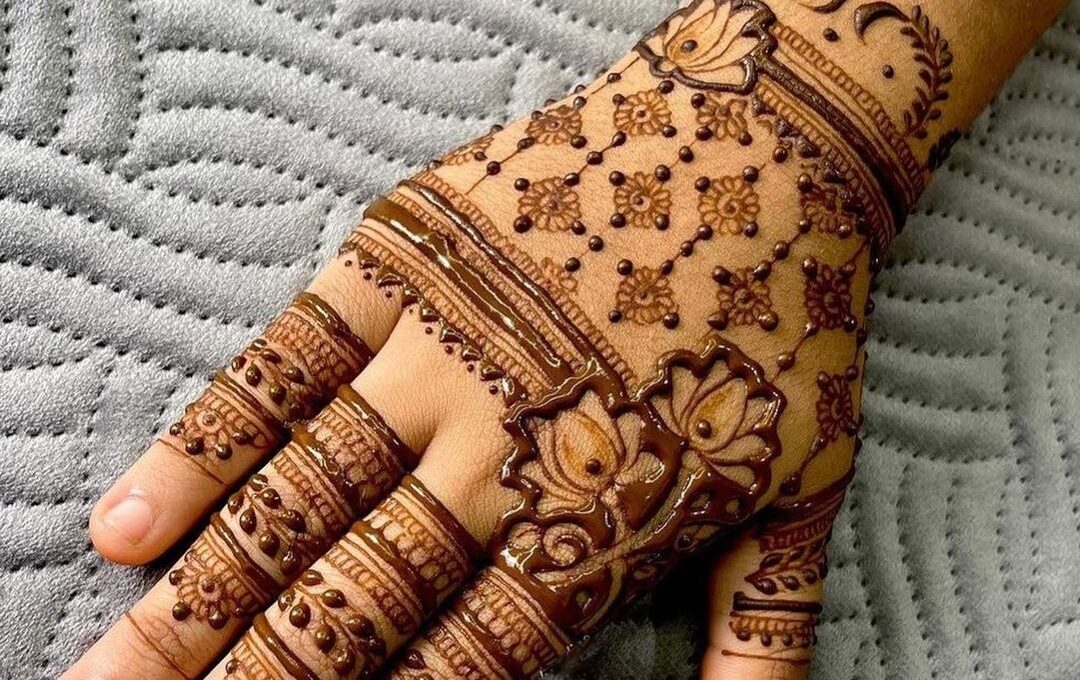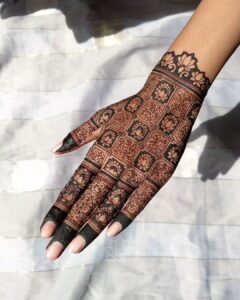
It holds deep symbolism in many cultures, representing prosperity, beauty, and spiritual protection. In Indian and Middle Eastern cultures, it is an integral part of celebrations like weddings and Eid.
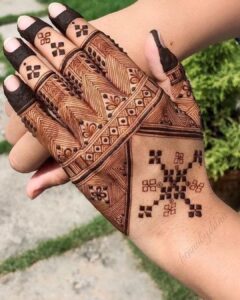
Beyond its symbolism, henna elegance is a way to connect with traditions that have been passed down through generations. Families come together, share stories, and enjoy the artistic process, making the experience not only one of beauty but also of togetherness.
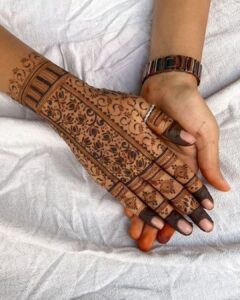
Festive mehndi designs are often more elaborate and detailed, incorporating intricate patterns. IThat can range from traditional motifs like paisleys, flowers, and peacocks to modern designs inspired by contemporary art.
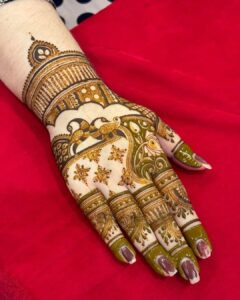
Classic mehndi designs feature symmetrical patterns, florals, and vine-like details that gracefully cover the hands and feet.
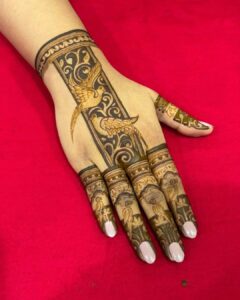
For a modern twist, many artists are now blending traditional elements with contemporary styles, creating geometric patterns, minimalistic lines, or even integrating cultural symbols. This fusion style is popular for those who want something unique and chic for their celebrations.
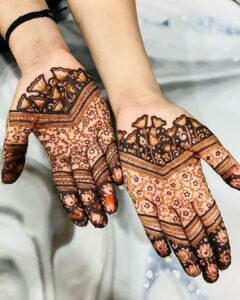
During festive times, mehndi application becomes a cherished ritual. For instance, during Karva Chauth, married women adorn their hands with beautiful mehndi as part of the tradition of fasting and praying for their husbands’ longevity.
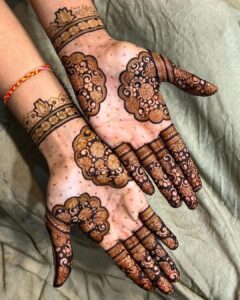
In Hindu festivals like Diwali, applying mehndi is a way to prepare for the arrival of prosperity. As people decorate themselves in their finest clothes and adorn their bodies with henna designs to celebrate the Festival of Lights.
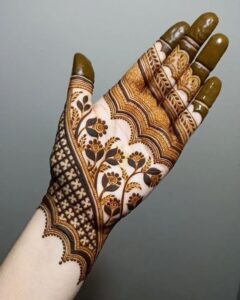
Incorporating mehndi into your festive look is not just about the art itself but also about the overall aesthetic. Mehndi complements traditional attire such as saris, lehengas, and salwar kameezzes. But it can also add a touch of elegance to more modern outfits.
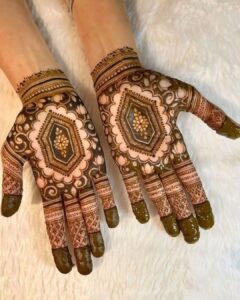
Whether you’re attending a formal family gathering or celebrating with friends, henna offers a timeless and sophisticated way to embrace the festive spirit.
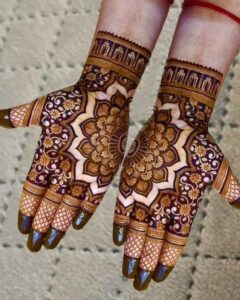
Designs may incorporate symbols of love, marriage, and prosperity, such as the bride and groom’s figures, auspicious elements like lotuses. Even it also contains personalized elements like names or meaningful dates.
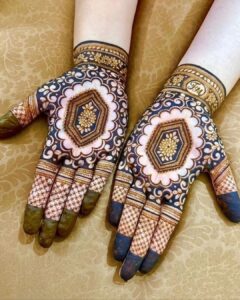
To keep your mehndi fresh and ensure a long-lasting design, it’s important to care for it properly. Allow the paste to dry naturally. And avoid using water on the area for at least 12 hours after application to deepen the stain.
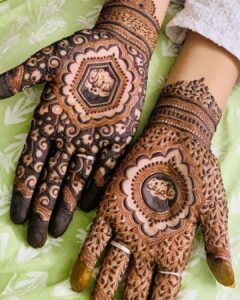
Traditional remedies like lemon and sugar, or even eucalyptus oil, can be applied to the dried henna to enhance its color. It also ensure it stays vibrant throughout your festivities.
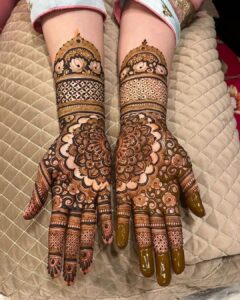
Aside from its beauty and cultural significance, henna has natural cooling properties. It soothes and relaxes the body, making it particularly refreshing during hot, festive days.
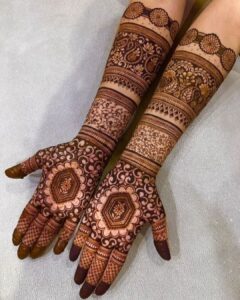
This makes it a perfect adornment for outdoor festivals and weddings. It helps to keep the body cool while enhancing your festive attire.
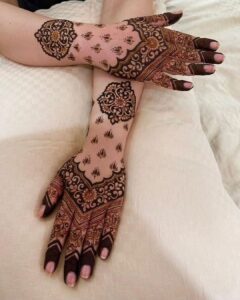
Celebrate with the beauty and timelessness of mehndi, and let its graceful patterns weave into your cherished memories.

